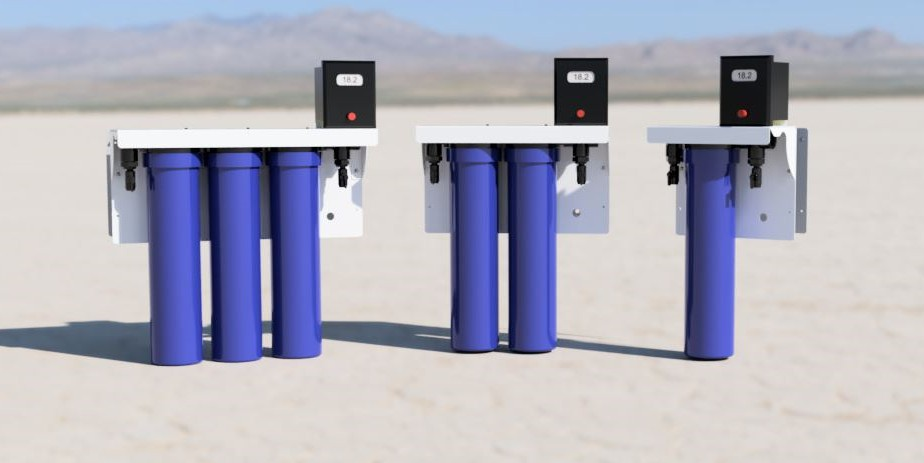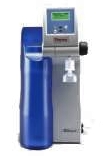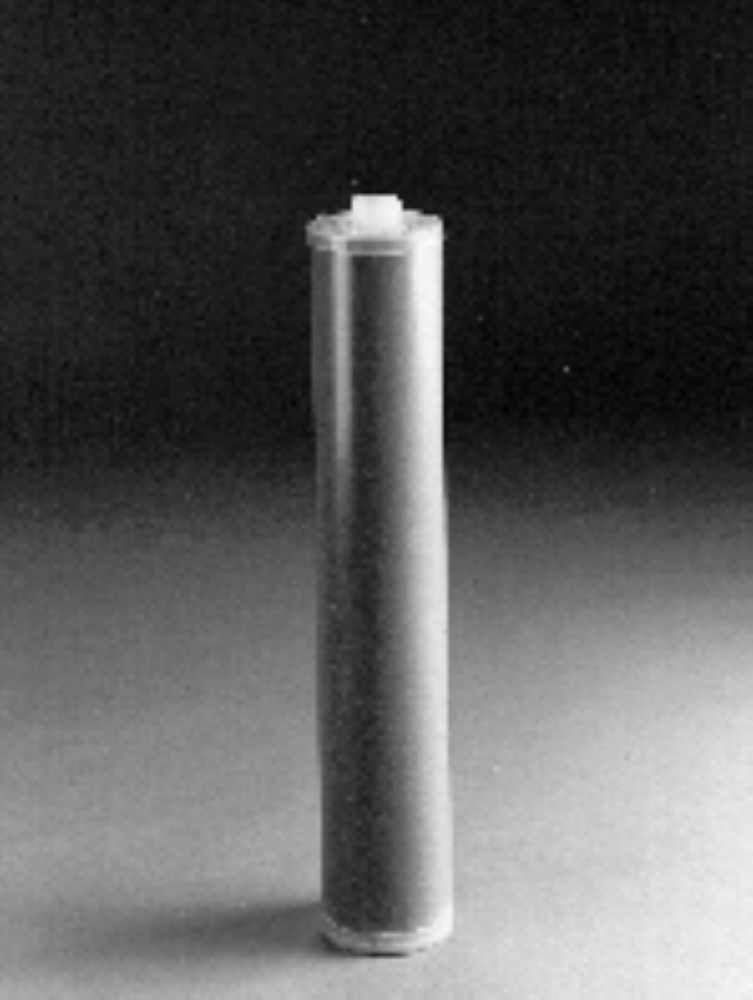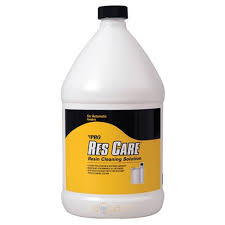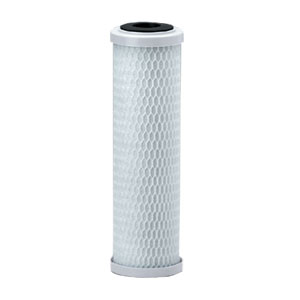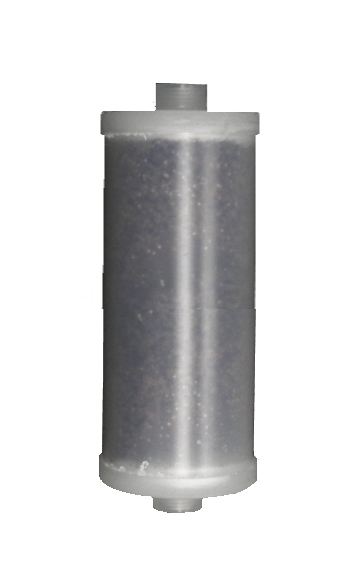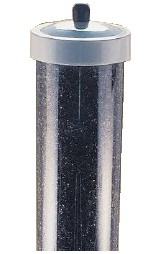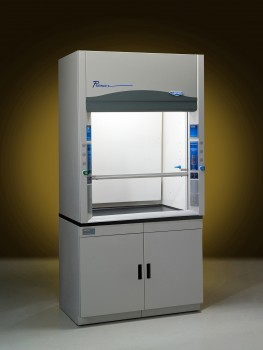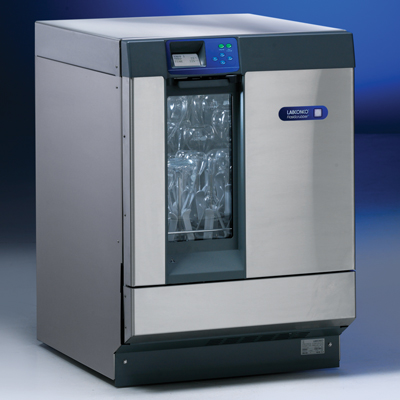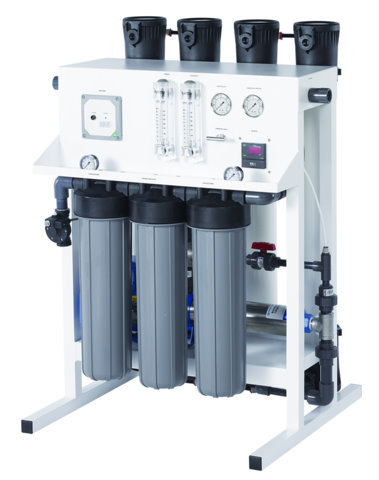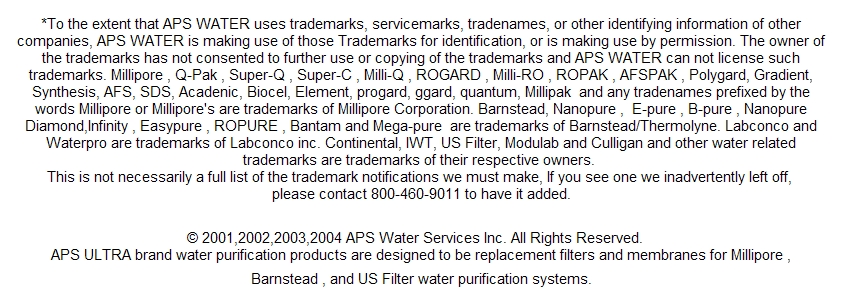Water in Research and Medicine
As analytical instruments become more and more sensitive, the presence in solutions of even minute traces of contaminant becomes less and less tolerable. For this reason, in biological and biochemical research, water, it is pyrogen free, sterile and has a total dissolved solids content less than 1 ppm.
Cleaning Applications
Glassware and tools to be used in applications where contamination by foreign substances is unacceptable are often washed in ultra pure or even absolutely pure water. Already thoroughly cleaned by scouring and chemical or thermal sterilization, this equipment may still carry traces of chemical cleaner, organic matter or metal salts which can be removed by a final rinse in pure water.
Comments : When glassware is very clean, water will not stick to the glass. If you invert it, the water should run off as a sheet. Only contaminated glassware will leave water "sticking" to it when emptied.
Tissue Cell Culture Applications
New pharmaceutical compounds such as those being developed in government and privacy laboratories for use as chemotherapeutic agents in the treatment of cancer are subject to extensive and intensive testing. In the early days of such testing, because the therapeutic activity of each compound was determined with animals, extensive animal care facilities were required at each laboratory. To reduce the investment in both test animals and facilities, researchers began to look for alternative methods that would yield equivalent results. The alternative finally selected is known as tissue cell culture.
Comments: Tissue culture is the growing of cells in a petri dish using "artificial blood" known as cell culture media. This growth media is mostly pure water with added ingredients needed to support cell life. These cells can be anything from yeast to human embryos. The water quality for these applications vary based on the type of cells grown
A scientist named Harrison conducted the first successful experiments in tissue cell culture in 1907. His work, which involved maintaining frog nerve cells in a hanging drop of frog lymph, led ultimately to the survival and growth of single-cell layers on flat surface such as a glass microscope slide or beaker wall. Living cells grown in this manner are kept immersed in a nutrient composed of salt, glucose, essential amino acids, antibiotics, vitamins, and blood serum protein, all dissolved in biopure water. Periodically, the nutrient solution is changed in order to remove metabolic by products and to replenish the food supply.
Eventually this technique was used to culture human tumor cells for testing the chemotherapeutic effects of new compounds. Typically, the test compounds are put into sterile tubes and covered with a nutrient medium containing a known suspension of new compounds. Typically, the test compounds are put into sterile tubes and covered with a nutrient medium containing a known suspension of tumor cells. The tubes are stoppered and incubated at 37 degrees Celsius. During the incubation, the proper pH is maintained by the joint action of NaHCO3 present in the solution and metabolically produce CO2.
Determination of cell growth after incubation is of primary importance. A direct count or even a turbid metric analysis of the number of cells present is difficult because the cells clump after they have been dislodged from the glass walls. Consequently, a different method of determining cell growth was developed based on the amount of protein formed. It consists of dislodging and dissolving the cells with alkaline copper tart rate and making a colorimetric measurement of the protein content with Folin-Ciocalteau phenolic dye reagent. The amount of protein present in the medium is determined beforehand so it can be taken into account in the final calculations.
Obviously, because of the exceedingly delicate nature of tissue cell culture and testing methodology, considerable care is taken to avoid introducing contaminants. One precaution is the use of biopure water in the preparation of all queous solutions and for the cleaning of all containers.
Pharmaceutical Applications
Water in the pharmaceutical industry is used for preparing culture media, for making up aqueous solutions, and for washing containers and apparatus. Because the required degree of purity varies with the application, water of different degrees of purity is usually available. Distilled water, for example is used whenever ion-free, pyrogen-free water is specified, as in intravenous solutions. To achieve the desired degree of purity with earlier systems, a double distillation was sometimes necessary. But now, newer stills are able to provide ion-free, pyrogen-free water with only one distillation.
Occasionally, ultraviolet light is employed within the purified water system to maintain water sterility while in storage. However, the efficacy of ultraviolet radiation has not been demonstrated in system with a wide range of flow-rate requirements.
When demineralized water is needed, it is produced by an ion exchange system. However, since water purified by this method may not be bacteria-free, the equipment must be treated periodically with chloramines unless special submicron filters are inserted before the exchange units.
The degree of purity normally required by the pharmaceutical industry for distilled water is 0.5 to 1 megohm-cm at 25 degrees Celsius. That for demineralized water from ion exchange units is 2 to 5 megohm-cm.
Comments : Since this is an older article, things have changed a bit. Distillation is far from the purest water that is now available. FDA regulations however set a standard when producing water for injection, that it be made only using distillation and/or reverse osmosis. deionizer, dead ended filtration and other technologies that may make purer water can not be used for the production of Phamaceutical grade water. The reasons are that you can not have devices used that a single failure would cause the water to fail to pass water quality specifications. Using Reverse Osmosis for the production of Water for injection, is dangerous at best and requires extreme monitoring and mainenance of the equipment. For his reason a huge majority of phamaceutical applications us special distillation units that are fed with reverse osmosis water.
Pyrogens
Long before pyrogens were actually discovered, water was suspected of containing a mysterious substance that caused a high fever if the water were injected intravenously. The importance of isolating this substance can be appreciated when one considers that practically ever patient admitted to a hospital these days for the treatment of shocks, tissue injury, dehydration, glandular disorder or surgery will at some point be giving intravenous injections of saline solution, dextrose solution or a solution of potassium chloride in glucose, all of which utilize water as the principal solvent. Likewise, many such patients will also receive injections of dehydrated antibiotics that were reconstituted with water.
The substance in water that caused the fever was eventually identified with reasonable certainty as one or more endotoxins produced by Gram negative bacteria. It was also discovered that this pyrogenic substance could be removed from water only by careful distillation. Even now, no amount of autoclaving, boiling or filtering appears to do the job.
Comments : This is not longer true. pyrogens can now be removed by reverse osmosis, ultrafiltration or dead ended sub micron filtration. However, with the exception of reverse osmosis, these methods are not permitted in the production of water that is going to be injected due to the potential of single point failure.
The pyrogens are extremely potent. As little as 0.002 gram of purified material per Kg given intravenously will produce a fever. It appears very abruptly after a latency period of about an hour and subsides just as abruptly two or three hours later. During the latency period, circulating granulocytes disappear from the blood stream and cling to the blood vessel walls. Their behavior suggests that the endotoxin intrdocuced by intravenous injection does not affect the thermoregulatory mechanisms of the body directly, but causes the release of a second pyrogenic substance, ostensibly from the granulocytes.
Regardless of the actual mechanism involved, pyrogens are clearly harmful and every effort is made to insure their removal from water to be used for injection. In fact, the United States Pharmacopeia requires that all solutions for intravenous injection and all accessories employed must be both sterile and pyrogen-free before usage.
Blood Fractionation Applications
Of the millions of pints of human blood donated to blood banks annually, about 10 percent is lost because the blood becomes outdated before it can be used. The loss is not the result of negligence or inefficiency on the part of the blood bank. Rather, it results from the fact that human blood stored by present-day methods at 4 degrees Celsius will not remain usable for more than 21 days.
Research has shown that red blood cells can be held in storage almost indefinitely at about –80 degrees Celsius. Maintaining this temperature with commercial equipment is no problem, but cooling the red blood cells to this temperature without damaging them proves to be quite difficult. As the temperature drops, ice crystals form within the cells, causing them to rupture or changing the salt concentration inside. In either case, the consequences are often lethal to the cells.
One way of avoiding such damage is to exchange the cells’ water content temporarily for a substance that doesn’t freeze or make the cells unfit for later use. A purified glycerol is used for this purpose. Blood treated this way and stored for over four years has been used to transfusions with excellent result.
The technique is based on centrifugation of blood in specially designed fractionation equipment. Whole blood (cells and plasma) enters an expendable plastic liner in the fractionation chamber. While being spun, the blood separates into two fractions: red cells clumped along the outer perimeter of the spinning liner, and plasma, which drains out from the liner near the center of the rotation. When nearly all of the plasma is drained off, the red cell mass is gradually infused with biopure water solutions of glycerol in increasing concentrations.
The infusion continues until the glycerol concentration in the red cells reaches about 35 percent. At this point, the plastic liner is removed from the fractionators and quickly refrigerated separately. When needed, the cells are thawed out at room temperature and the liner again placed in the fractionator. This time, however, the infusion process is reversed. All of the glycerol is removed in a series of rinses, each one containing less glycerol. The solvent may be any one of several parenteral fluids prepared from biopure water or it may be a plasma fraction.
A interesting and potentially beneficial by-product of this process is the fact that no cases of serum hepatitis have resulted from transfusions made with glycerolized blood. Apparently, in some way, the glycerolization-deglycerolization process eliminates the hepatitis virus.
Cryobiology Applications
Closely associated with frozen blood storage is the indefinite preservation of living tissue by deep freezing. Here, excised tissues are washed in an isotonic solution prepared with ultrapure water, frozen slowly, and stored in liquid nitrogen. Tissues now being preserved in this manner include skin, cornea, bone marrow, blood vessels and human tumors.
Preserving the latter through freezing has been a fairly recent innovation necessitated by the desirability of maintaining genetic stability in cancer research Preparation for freezing involves immersing fragments of tissue in glass ampoules containing a nutrient medium and glycerol in ultrapure water. Next, the ampoules are sealed and cooled at the rate of 1 degree Celsius per minute from ambient temperature to –25 degrees Celsius. They are then cooled rapidly to –70 degrees Celsius to prevent ice crystal growth and stored in liquid nitrogen at –195 degrees Celsius. When they are to be used, the ampoules are thawed rapidly in a 37 degree Celsius bath. Before implantation on a rodent host, the thawed tissue is rinsed several times in saline solution (made with biopure water) to remove the glycerol.
This method of preserving tumor tissue for cancer research does not alter a tumor’s morphology, translatability, or sensitivity to treatment with known growth inhibitors. Thawed tumors grow more slowly than no-frozen tumors in the first transplant generation, but after several generations, they recover their normal growth rates. Also, there is no measurable difference in viability between frozen and nonfrozen tumors.
General Lab Water Applications
Distilled water is a workhorse in biological and chemical laboratories. It is used to dilute aqueous solutions to specific concentrations. It is used in titrations. It is also used in preparing nutrient media, standard laboratory solutions, fixatives and biological stains.
The most popular biological stain is a purplish dye known as hematein, made by oxidizing an organic material extracted from logwood. Employed in a distilled water solution, hematein is used to differentiate cell nuclei from surrounding protoplasm for viewing under a microscope. In practice, a fixed, washed section of tissue is immersed in a solution of hematein stain of known strength. After a prescribed period of immersion, the tissue is withdrawn, rinsed to remove excess stain, and then passed through a succession of distilled water-ethyl alcohol baths in which the concentration of alcohol is increased until the final bath is virtually 100 percent alcohol.
At that point, nearly all of the water has been extracted from the tissue and replaced by the alcohol. This makes possible the next step, the replacement of alcohol by xylene, which is a paraffin solvent. Finally, through a succession of melted paraffin bath at about 50 – 60 degrees Celsius, the xylene is in turn displaced by paraffin. Next the tissue is embedded in a block of solid paraffin, readying it for slicing with a microtome to thickness of only a few microns.
Slices of paraffin-imbedded tissue are then floated on small pools of albumin in distilled water. About the diameter of a nickel, each one is centered on a glass microscope slide, which is gently placed on the warm bed of a special hot plate. The warmth causes the paraffin to flatten out and adhere to the glass as the water evaporates from the pool, leaving behind the albumin, which acts as a transparent glue.
After the paraffin-embedded specimens are firmly in place on the slides, they are racked and dipped in xylene, each thin section of tissue receives a drop of Canada balsam, followed by a paper-thin cover glass. After a day or two of baking at 45 – 50 degrees Celsius, the balsam hardens and the tissue is ready for detailed study. Before use, the slides can be rinsed with distilled water to remove dust or water spots which might impair viewing under a microscope.
Barnstead/Thermolyne makes excellent water filtration equipment for most high purity applications. That equipment can be found here :
Barnstead Lab Water Products
excerpts from "Barnstead Basic Book On Water" Date Unknown
|
Images are representative of the products. Images may or may not be of the actual product. If it is important e-mail us for an actual image if available.
* Flat Rate UPS shipping when able to ship via UPS and is in the USA excluding Hawaii and Alaska.
Larger Items may not be able to ship via UPS, in that case freight charges will be quoted seperately.
International shipping will be quoted after the order is placed. You will have the opportunity to cancel before we finalize your order.
Terms and conditions
Credit Application
Privacy
Policy
List All Products
|
